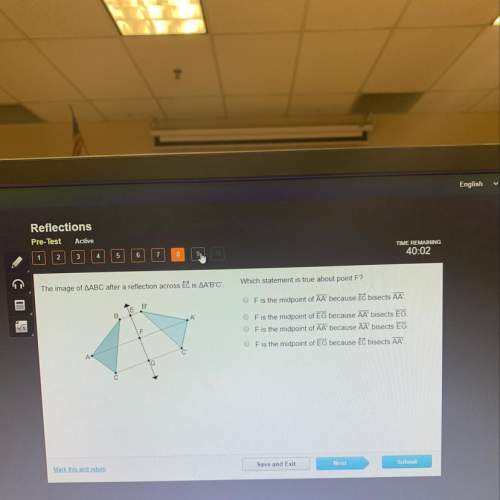
Mathematics, 21.02.2020 17:13 exoticbunnylover123
This problem is designed to give you an understanding of the methodology behind hypothesis testing. Ever wonder how someone in America can be arrested if they really are presumed innocent, why a defendant is found not guilty instead of innocent, or why Americans put up with a justice system which sometimes allows criminals to go free on technicalities? These questions can be understood by understanding the similarity of the American justice system to hypothesis testing in statistics and the two types of errors it can produce. True, the trial process does not use numerical values as does hypothesis testing in statistics, but both the justice system and statistical versions of hypothesis testing share common elements.
a. In the American justice system, a defendant is always "innocent until proven guilty." Suppose you are the prosecutor in a trial. What would your null and alternative hypotheses be in this case? State them in words (there are no numerical values here!).
b. The two possible verdicts that a jury can return are "guilty" and "not guilty." How do these decisions correspond to the two possible decisions in hypothesis testing?
c. If an innocent person has been found guilty, what type of hypothesis testing error has been made?
d. If a guilty person is found not guilty in his/her trial, what type of hypothesis testing error has been made?
e. In the justice system and statistics there is no possibility of absolute proof, and so a standard has to be set for rejecting the null hypothesis. In the justice system the standard is "a reasonable doubt." The null hypothesis has to be rejected beyond a reasonable doubt. In statistics the standard is the maximum acceptable probability of incorrectly rejecting a true null hypothesis. What is the name of this element in a statistical hypothesis test?

Answers: 3


Another question on Mathematics

Mathematics, 21.06.2019 17:00
Determine the fraction of total interest owed. after the fourth month of a 12-month loan: the numerator is: {(n + ) + (n + ) + (n + ) + (n + )} = , and the denominator is: {(n) + (n + 1) + + (n + )} = . therefore, the fraction is numerator/denominator (to the nearest tenth) =
Answers: 1

Mathematics, 21.06.2019 18:30
The monetary value earned for selling goods or services to customers is called a.) revenue b.) assets c.) money d.) accounting
Answers: 2

Mathematics, 21.06.2019 20:40
Formulate the indicated conclusion in nontechnical terms. be sure to address the original claim. the foundation chair for a hospital claims that the mean number of filled overnight beds is over 523, and she is therefore justified starting a funding campaign to add a wing to the hospital. assuming that a hypothesis test has been conducted and that the conclusion is failure to reject the null hypothesis, state the conclusion in nontechnical terms.
Answers: 3

Mathematics, 21.06.2019 21:10
Which exponential function has an initial value of 2? f(x) = 2(3x) f(x) = 3(2x)
Answers: 1
You know the right answer?
This problem is designed to give you an understanding of the methodology behind hypothesis testing....
Questions






Business, 03.01.2020 21:31


Computers and Technology, 03.01.2020 21:31


Chemistry, 03.01.2020 21:31

Chemistry, 03.01.2020 21:31


Social Studies, 03.01.2020 21:31










